#carbon paper
Text

While I'm sure somewhere in the universe carbon paper is still in production... when was the last time you saw it in use?
23 notes
·
View notes
Text
So here’s a question for anyone who has no recollection of the pre-internet days.
1 note
·
View note
Text
Greenwashing set Canada on fire

On September 22, I'm (virtually) presenting at the DIG Festival in Modena, Italy. On September 27, I'll be at Chevalier's Books in Los Angeles with Brian Merchant for a joint launch for my new book The Internet Con and his new book, Blood in the Machine.

As a teenager growing up in Ontario, I always envied the kids who spent their summers tree planting; they'd come back from the bush in September, insect-chewed and leathery, with new muscle, incredible stories, thousands of dollars, and a glow imparted by the knowledge that they'd made a new forest with their own blistered hands.
I was too unathletic to follow them into the bush, but I spent my summers doing my bit, ringing doorbells for Greenpeace to get my neighbours fired up about the Canadian pulp-and-paper industry, which wasn't merely clear-cutting our old-growth forests – it was also poisoning the Great Lakes system with PCBs, threatening us all.
At the time, I thought of tree-planting as a small victory – sure, our homegrown, rapacious, extractive industry was able to pollute with impunity, but at least the government had reined them in on forests, forcing them to pay my pals to spend their summers replacing the forests they'd fed into their mills.
I was wrong. Last summer's Canadian wildfires blanketed the whole east coast and midwest in choking smoke as millions of trees burned and millions of tons of CO2 were sent into the atmosphere. Those wildfires weren't just an effect of the climate emergency: they were made far worse by all those trees planted by my pals in the eighties and nineties.
Writing in the New York Times, novelist Claire Cameron describes her own teen years working in the bush, planting row after row of black spruces, precisely spaced at six-foot intervals:
https://www.nytimes.com/2023/09/15/opinion/wildfires-treeplanting-timebomb.html
Cameron's summer job was funded by the logging industry, whose self-pegulated, self-assigned "penalty" for clearcutting diverse forests of spruce, pine and aspen was to pay teenagers to create a tree farm, at nine cents per sapling (minus camp costs).
Black spruces are made to burn, filled with flammable sap and equipped with resin-filled cones that rely on fire, only opening and dropping seeds when they're heated. They're so flammable that firefighters call them "gas on a stick."
Cameron and her friends planted under brutal conditions: working long hours in blowlamp heat and dripping wet bulb humidity, amidst clouds of stinging insects, fingers blistered and muscles aching. But when they hit rock bottom and were ready to quit, they'd encourage one another with a rallying cry: "Let's go make a forest!"
Planting neat rows of black spruces was great for the logging industry: the even spacing guaranteed that when the trees matured, they could be easily reaped, with ample space between each near-identical tree for massive shears to operate. But that same monocropped, evenly spaced "forest" was also optimized to burn.
It burned.
The climate emergency's frequent droughts turn black spruces into "something closer to a blowtorch." The "pines in lines" approach to reforesting was an act of sabotage, not remediation. Black spruces are thirsty, and they absorb the water that moss needs to thrive, producing "kindling in the place of fire retardant."
Cameron's column concludes with this heartbreaking line: "Now when I think of that summer, I don’t think that I was planting trees at all. I was planting thousands of blowtorches a day."
The logging industry committed a triple crime. First, they stole our old-growth forests. Next, they (literally) planted a time-bomb across Ontario's north. Finally, they stole the idealism of people who genuinely cared about the environment. They taught a generation that resistance is futile, that anything you do to make a better future is a scam, and you're a sucker for falling for it. They planted nihilism with every tree.
That scam never ended. Today, we're sold carbon offsets, a modern Papal indulgence. We are told that if we pay the finance sector, they can absolve us for our climate sins. Carbon offsets are a scam, a market for lemons. The "offset" you buy might be a generated by a fake charity like the Nature Conservancy, who use well-intentioned donations to buy up wildlife reserves that can't be logged, which are then converted into carbon credits by promising not to log them:
https://pluralistic.net/2020/12/12/fairy-use-tale/#greenwashing
The credit-card company that promises to plant trees every time you use your card? They combine false promises, deceptive advertising, and legal threats against critics to convince you that you're saving the planet by shopping:
https://pluralistic.net/2021/11/17/do-well-do-good-do-nothing/#greenwashing
The carbon offset world is full of scams. The carbon offset that made the thing you bought into a "net zero" product? It might be a forest that already burned:
https://pluralistic.net/2022/03/11/a-market-for-flaming-lemons/#money-for-nothing
The only reason we have carbon offsets is that market cultists have spent forty years convincing us that actual regulation is impossible. In the neoliberal learned helplessness mind-palace, there's no way to simply say, "You may not log old-growth forests." Rather, we have to say, "We will 'align your incentives' by making you replace those forests."
The Climate Ad Project's "Murder Offsets" video deftly punctures this bubble. In it, a detective points his finger at the man who committed the locked-room murder in the isolated mansion. The murderer cheerfully admits that he did it, but produces a "murder offset," which allowed him to pay someone else not to commit a murder, using market-based price-discovery mechanisms to put a dollar-figure on the true worth of a murder, which he duly paid, making his kill absolutely fine:
https://pluralistic.net/2021/04/14/for-sale-green-indulgences/#killer-analogy
What's the alternative to murder offsets/carbon credits? We could ask our expert regulators to decide which carbon intensive activities are necessary and which ones aren't, and ban the unnecessary ones. We could ask those regulators to devise remediation programs that actually work. After all, there are plenty of forests that have already been clearcut, plenty that have burned. It would be nice to know how we can plant new forests there that aren't "thousands of blowtorches."
If that sounds implausible to you, then you've gotten trapped in the neoliberal mind-palace.
The term "regulatory capture" was popularized by far-right Chicago School economists who were promoting "public choice theory." In their telling, regulatory capture is inevitable, because companies will spend whatever it takes to get the government to pass laws making what they do legal, and making competing with them into a crime:
https://pluralistic.net/2022/06/13/public-choice/#ajit-pai-still-terrible
This is true, as far as it goes. Capitalists hate capitalism, and if an "entrepreneur" can make it illegal to compete with him, he will. But while this is a reasonable starting-point, the place that Public Choice Theory weirdos get to next is bonkers. They say that since corporations will always seek to capture their regulators, we should abolish regulators.
They say that it's impossible for good regulations to exist, and therefore the only regulation that is even possible is to let businesses do whatever they want and wait for the invisible hand to sweep away the bad companies. Rather than creating hand-washing rules for restaurant kitchens, we should let restaurateurs decide whether it's economically rational to make us shit ourselves to death. The ones that choose poorly will get bad online reviews and people will "vote with their dollars" for the good restaurants.
And if the online review site decides to sell "reputation management" to restaurants that get bad reviews? Well, soon the public will learn that the review site can't be trusted and they'll take their business elsewhere. No regulation needed! Unleash the innovators! Set the job-creators free!
This is the Ur-nihilism from which all the other nihilism springs. It contends that the regulations we have – the ones that keep our buildings from falling down on our heads, that keep our groceries from poisoning us, that keep our cars from exploding on impact – are either illusory, or perhaps the forgotten art of a lost civilization. Making good regulations is like embalming Pharaohs, something the ancients practiced in mist-shrouded, unrecoverable antiquity – and that may not have happened at all.
Regulation is corruptible, but it need not be corrupt. Regulation, like science, is a process of neutrally adjudicated, adversarial peer-review. In a robust regulatory process, multiple parties respond to a fact-intensive question – "what alloys and other properties make a reinforced steel joist structurally sound?" – with a mix of robust evidence and self-serving bullshit and then proceed to sort the two by pantsing each other, pointing out one another's lies.
The regulator, an independent expert with no conflicts of interest, sorts through the claims and counterclaims and makes a rule, showing their workings and leaving the door open to revisiting the rule based on new evidence or challenges to the evidence presented.
But when an industry becomes concentrated, it becomes unregulatable. 100 small and medium-sized companies will squabble. They'll struggle to come up with a common lie. There will always be defectors in their midst. Their conduct will be legible to external experts, who will be able to spot the self-serving BS.
But let that industry dwindle to a handful of giant companies, let them shrink to a number that will fit around a boardroom table, and they will sit down at a table and agree on a cozy arrangement that fucks us all over to their benefit. They will become so inbred that the only people who understand how they work will be their own insiders, and so top regulators will be drawn from their own number and be hopelessly conflicted.
When the corporate sector takes over, regulatory capture is inevitable. But corporate takeover isn't inevitable. We can – and have, and will again – fight corporate power, with antitrust law, with unions, and with consumer rights groups. Knowing things is possible. It simply requires that we keep the entities that profit by our confusion poor and thus weak.
The thing is, corporations don't always lie about regulations. Take the fight over working encryption, which – once again – the UK government is trying to ban:
https://www.theguardian.com/technology/2023/feb/24/signal-app-warns-it-will-quit-uk-if-law-weakens-end-to-end-encryption
Advocates for criminalising working encryption insist that the claims that this is impossible are the same kind of self-serving nonsense as claims that banning clearcutting of old-growth forests is impossible:
https://twitter.com/JimBethell/status/1699339739042599276
They say that when technologists say, "We can't make an encryption system that keeps bad guys out but lets good guys in," that they are being lazy and unimaginative. "I have faith in you geeks," they said. "Go nerd harder! You'll figure it out."
Google and Apple and Meta say that selectively breakable encryption is impossible. But they also claim that a bunch of eminently possible things are impossible. Apple claims that it's impossible to have a secure device where you get to decide which software you want to use and where publishers aren't deprive of 30 cents on every dollar you spend. Google says it's impossible to search the web without being comprehensively, nonconsensually spied upon from asshole to appetite. Meta insists that it's impossible to have digital social relationship without having your friendships surveilled and commodified.
While they're not lying about encryption, they are lying about these other things, and sorting out the lies from the truth is the job of regulators, but that job is nearly impossible thanks to the fact that everyone who runs a large online service tells the same lies – and the regulators themselves are alumni of the industry's upper eschelons.
Logging companies know a lot about forests. When we ask, "What is the best way to remediate our forests," the companies may well have useful things to say. But those useful things will be mixed with actively harmful lies. The carefully cultivated incompetence of our regulators means that they can't tell the difference.
Conspiratorialism is characterized as a problem of what people believe, but the true roots of conspiracy belief isn't what we believe, it's how we decide what to believe. It's not beliefs, it's epistemology.
Because most of us aren't qualified to sort good reforesting programs from bad ones. And even if we are, we're probably not also well-versed enough in cryptography to sort credible claims about encryption from wishful thinking. And even if we're capable of making that determination, we're not experts in food hygiene or structural engineering.
Daily life in the 21st century means resolving a thousand life-or-death technical questions every day. Our regulators – corrupted by literally out-of-control corporations – are no longer reliable sources of ground truth on these questions. The resulting epistemological chaos is a cancer that gnaws away at our resolve to do anything about it. It is a festering pool where nihilism outbreaks are incubated.
The liberal response to conspiratorialism is mockery. In her new book Doppelganger, Naomi Klein tells of how right-wing surveillance fearmongering about QR-code "vaccine passports" was dismissed with a glib, "Wait until they hear about cellphones!"
https://pluralistic.net/2023/09/05/not-that-naomi/#if-the-naomi-be-klein-youre-doing-just-fine
But as Klein points out, it's not good that our cellphones invade our privacy in the way that right-wing conspiracists thought that vaccine passports might. The nihilism of liberalism – which insists that things can't be changed except through market "solutions" – leads us to despair.
By contrast, leftism – a muscular belief in democratic, publicly run planning and action – offers a tonic to nihilism. We don't have to let logging companies decide whether a forest can be cut, or what should be planted when it is. We can have nice things. The art of finding out what's true or prudent didn't die with the Reagan Revolution (or the discount Canadian version, the Mulroney Malaise). The truth is knowable. Doing stuff is possible. Things don't have to be on fire.



If you'd like an essay-formatted version of this post to read or share, here's a link to it on pluralistic.net, my surveillance-free, ad-free, tracker-free blog:
https://pluralistic.net/2023/09/16/murder-offsets/#pulped-and-papered
#pluralistic#logging#pulp and paper#ontario#greenwashing#a market for lemons#incentives matter#capitalism#late-stage capitalism#climate emergency#wildfires#canada#canpoli#ontpoli#carbon offsets#self-regulation#nerd harder#epistemological chaos#regulatory capture#Claire Cameron#pines in lines
3K notes
·
View notes
Text
The richest 1% of humanity is responsible for more carbon emissions than the poorest 66%, with dire consequences for vulnerable communities and global efforts to tackle the climate emergency, a report says.
The most comprehensive study of global climate inequality ever undertaken shows that this elite group, made up of 77 million people including billionaires, millionaires and those paid more than US$140,000 (£112,500) a year, accounted for 16% of all CO2 emissions in 2019 – enough to cause more than a million excess deaths due to heat, according to the report.
Twelve billionaires’ climate emissions outpollute 2.1m homes, analysis finds
#climate crisis#oxfam#carbon emissions#can't believe I'm here stressing over washing my fucking table towels vs. using paper towels#and some fuckers are out there mining bitcoin 24/7
2K notes
·
View notes
Text

Albarran Cabrera —– Instagram
The Indestructible
2022, #34128 Gelatin carbon print and cyanotype
#artists on tumblr#photographers on tumblr#albarran cabrera#albarrancabrera#gampi paper#the indestructible#cyanotype#carbon printing#34128
60 notes
·
View notes
Text
my liege, a new element just dropped. the ball

#i think this is some sort of /R carbon group#but in all faithfullness it's my first time seing it#chemistry#resin synthesys#?#chemistry memes#organic chemistry#REM resin#saw it in a REM resin synthesys paper. maybe this is a resin chemistry thing#don't want to ofend the#resin chemists#by accident#maybe it's a cultural thing#meat tasting sky
53 notes
·
View notes
Text
Also painters pls help me with noob hacks:
I want to copy a Real Art onto my jacket. A pretty simple and small one but a Real one nonetheless. Are there any secret hacks for that kind of copying, or is the pinnacle really just the way I do it when drawing, i.e. put reference image as close as humanly possible, flick eyes between fairly rapidly, make a high-pitched whining noise the whole time etc.
#has science explained why you need to bite your tongue?#also can’t use carbon transfer paper#cus it ain’t a firm enough surface with the lining
36 notes
·
View notes
Text
before i learn i’m actually not that good at wood carving yet please just imagine how cool it would look if it was carved
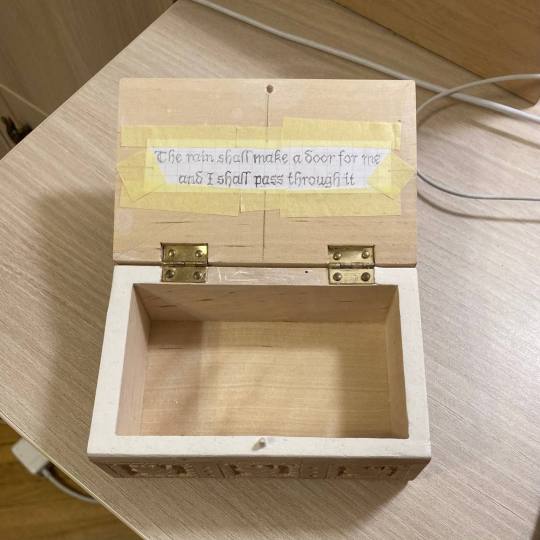
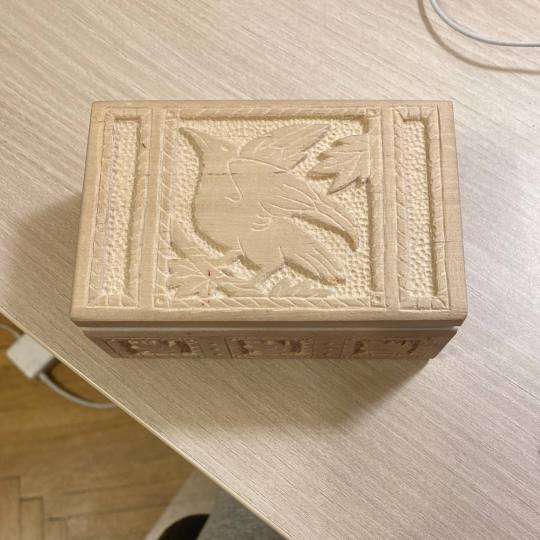
#probably will have to find carbon paper to transfer it onto the wood#maybe will end up painting it instead..... idk#mari wips
90 notes
·
View notes
Text

Adèle Flamand Browne
2014
77 notes
·
View notes
Text
This is absolute hobby drama level pettiness but lately (and by lately i mean the last few years) i’ve found it so hard to get decent basic colours for scrapbooking paper... Mostly all sorts of skin tones and especially dark browns are hard to find. i get why as per its original purpose but augh
I could order it online but its rare that the photography properly shows the texture, and especially if its glossy or not? glossy paper sucks to work with and when paper is $2 a sheet i don’t want to waste money. i would absolutely kill to live in a big city so niche products and shops could actually survive here
27 notes
·
View notes
Text

primary anodyne // handcut paper collage and carbon transfer on recycled paperboard, july 2023
#paper collage#collage art#found materials#artists on tumblr#collageart#analog collage#collage#abstract#artist#abstract art#carbon#paper art#papercollage#collagist#collage artist#handcut collage#collages#mixed media#art journal#art abstrait#abstracart#abstrakt#abstrato
22 notes
·
View notes
Text
i currently have mild nerve damage in one of my fingers bc ive started mass-making stickers by hand, using a scalpel to cut out every single one
i really hope its worth it oughghhg
#yaps#i had this brief turmoil over the sustainability of my work#like i print all my stickers on paper then add a thin vinyl coating to them#which i hope is better than a full vinyl sticker#bc man vinyl is not good for the planet but i want to make products that last#i do this bc its way more cost-effective but i hope it also kinda offsets the carbon footprint of using vinyl?#its def better than getting a company to make them for me#a lot of my art is about loving nature so i want my physical products to reflect that where its possible#yeah no ethical consumption under capitalism but i wanna do what i can#i do miss my fingertip tho#if anyone has any thoughts or suggestions lmk#its such a tricky thing to navigate esp when you're poor
16 notes
·
View notes
Text
They do vulnerability with Mac so well, and in such careful doses. The soft reverence in the way she says, “They had tons of clothes” breaks my heart. So does the confidence in her mispronounciation of “chic”—a beautiful little reference to comic!Mac being a reader, often above her grade level, but feeling like she has to hide it. This kid has so many layers, and she wants so badly to keep anyone from seeing that, because in her world, every layer offers a new chance for someone to slice in deep. Prioritize tough. Prioritize cajones. Don’t let them see you’re smarter than they expect. Don’t let them see you wish you had more than your brother’s hand-me-downs. Don’t let them see you’re dreaming of getting out in a thousand tiny little ways. Let them remember only the brash outer surface, the one that can’t hurt when they don’t like it, because it isn’t really you.
Contrast this with the desperation in her voice when she thinks it’s all going to be erased. The panicked apologies. The hitch in her smile: “Let’s be honest—you couldn’t [forget me], even if you tried, right?” She knows there’s only so much road out ahead of her; she’s seen the stone in the ground. And she’s begging them—with that smile, always play-acting, just a little—to tell her again she’s more than just a tough little shit-starter. To tell her she’s worth remembering. That they will, even if she can’t stay. If I’m going, that moment says, I want it to be when you three can see who I actually am. I want friends. I want to be remembered. I want to matter. It’s all built to with such careful detail work over the season, and I am desperate to see more of it in the future.
#paper girls#paper girls spoilers#mac coyle#and for them all to instantly agree#and for KJ to take it a step further and invite her (all of them) to her bat mitzvah#saying in no uncertain terms ‘I do not surrender this. i do not resign myself to forgetting any of you.’#‘there is a future if we make it’#i think that’s one of the core themes of this show. making the future on your terms regardless of what the world says about it#Mac gets the short end by far—but as she says#she’s not dead yet#and none of them are fooled any longer into thinking they’re just#rich kid. honor roll. new girl. shit-starter.#they’re all nuanced. they’re all layered. layers aren’t handing someone a knife and asking them to wound you#i need to see the next steps now that they’ve all sort of had time to wrestle with that idea for the first time#but Jesus any time I see someone shit-talk Mac on Twitter my hackles go up#cuz yeah she kind of sucks at the jump. she’s meant to. she’s a little kid who has only learned to shield from violence#and she’s learned to do so by projecting that violence outward#it’s her arc. learning that it’s okay to be kind. that there’s strength in Erin’s compassion and KJ’s empathy and Tiff’s brains#that there isn’t just one way to wear her brother’s jacket and ride her brother’s bike and be a carbon copy#that she can be herself and be valued and loved and goddamn I need a renewal
102 notes
·
View notes
Text
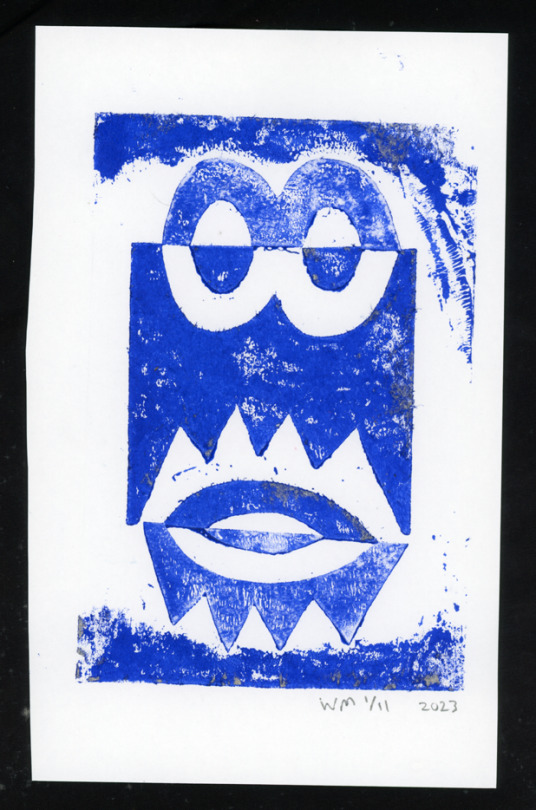

Notan Collagraph (upper) and a Notan Carbon Paper Collagraph(lower).
8 notes
·
View notes
Note
A mutual acquaintance wants to try getting one of those fancy pens, got any suggestions for newcomers?
Absolutely!
Despite me always pining for the super pricy fancy pens, some of the best pens you can own imo are less than $20 USD off the bat, and while the "nicer" ones out there are. over that price, you don't really need that to get a really good first experience. I'll offer some super easy pens, some more intermediate pens, and some inks! This is going to be a long ride, so buckle up!
If you don't know where to start and are intimidated by bottled ink and instead want a pen that can write right away, I recommend the Pilot Varsity! You can get them at Michaels here in the US, and theyre slowly becoming more popular in retail shops like Walmart.
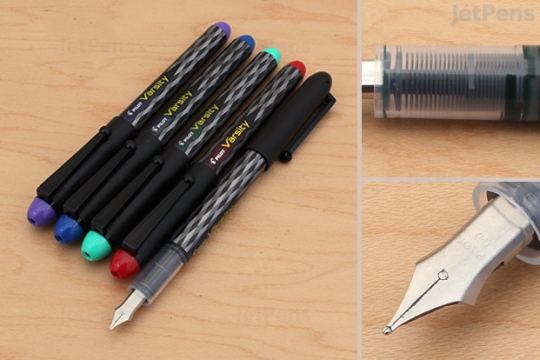
Classic steel nib, not much flex because it's steel, but it writes pretty sturdily. I really like that it comes in different colors. They're disposable, so if you don't like them then you dont gotta keep 'em, and if you bust the nib by accident (we all have at least once), you aren't going to have to sell a kidney to replace it like you might need to with pricier pens.
If you want a pen you can put ink cartridges into, or just want a good workhorse of a pen, i HIGHLY recommend the Platinum Preppy. The one I own was $14 USD and came with a cartridge of water soluble black ink. For $4 USD, I got 4 cartridges of Platinum's Carbon Black ink, which is waterproof and smooth! Very versatile!

I REALLY like this one. Ive never had the ink dry out even when i had tucked away for like a month, and if you ever want to use it with bottled ink, you can get a Platinum converter and use whatever fountain pen safe ink you dream of :] This pen only comes in F as far as I know (which is a western EF), but the chinese market has a version called the Platinum Meteor that comes in EF and has a cute shooting star on the nib :] Back when I started writing this I had lost mine for like a month but just found it and it wrote just fine the second i opened it up. The only thing I DISLIKE is that the converter cartridges are sold separately and you HAVE to buy platinum brand for this pen. I already have two bc of my other platinum pens, but. Yanno. Its still annoying to HAVE to do that.

Similarly, the Kaküno is fantastic! all the above statements, but it has the added benefit of having a cute face on the nib as well as some cute collabs sometimes :] They're also about $14-$16 USD. They take Pilot cartridges in various colors, which are $3-$4 USD and Pilot converters.
I highly recommend the platinum preppy for the full fountain pen experience! It's not mega-expensive as pens go, so if you dont like it you havent sunk hundreds of dollars into a tool.
Lamy is having quality control issues that no one seems to want to contest because of their popularity, and the recent "no bro its totally the same color as the old popular one trust me" ink fiasco. TWSBI is another brand thats normally recommended and while theyre good pens, theyre shitheads as a company and like to use their muscle to bully both retailers and also smaller pen companies. I dont recommend either brand right now.
NOW, ONTO INK AND PAPER:
Your nib, paper, and ink are pretty important. fountain pens dont like rough paper, but they handle it better the larger they are (M, B). Dry inks will not always play nice in fine pens (Ef, F), and an EF pen will eat the shit out of rough paper and can get clogged. If you can get your hands on Rhodia paper to practice, good! If not most sketchbooks will tolerate F pens in my experience. Stillman and Birn are my workhorse sketchbooks and the pens work fine in all of their paper styles, but Hobby Lobby's sketchbooks also handle it well, as do BLICK's colorful leather sketchbooks. Don't Buy Moleskine. If you want to get really good ink effects (ie, you bought an ink with glitter or it has some cool effect like sheening or shading), tomoe river paper is hailed as the gold standard, but you can get similar effects on Rhodia or Clairfontaine paper, which afaik is easier to get ahold of overseas (cant speak for other countries on the US continent, but I will say I saw more clairfontaine in france than here on the us).
NOW FOR INK. my favorite part :] :
For both Waterproof and Black ink, i recommend Platinum's Carbon Black. I think it's pigment-based, unlike most dye-based inks, so it can be tough to clean out of your pen if it dries, but its noting a lil soap and water cant fix :3 It's benefit is that it comes in cartridges usable with platinum pens, so you dont need a whole bottle if you dont want one.
For color inks, I really like Pilot's Iroshizuku line. It is a WET ink and is not waterproof, but they come in cool bottles and pretty colors. I own Ajisai, Shinkai, and samples of Momiji, Murasaki Shikibu, Chikurin, Kosumosu, and Asagao. I use them both to sketch AND to color things and write. My workhorse non-waterproof color, the one i draw most in, is the Sailor Studio 343, but the sailor manyo line is also great! If you like and/or miss scented inks, De Atramentis has a line of them!
Be careful with inks that have glitter. I own the J. Herbin Emerald of Chivor and its glorious but if you leave it in your pen...thousands soaks hell attack. That being said if it would entice you, treat yourself to a fun and shiny ink! I have Colorverse Scorpii Glistening and its really pretty! Diamine has an excellent range that are easier on your pen but I dont have experience with them ngl.
UNDER NO CIRCUMSTANCE SHOULD YOU BUY ANYTHING FROM NOODLERS. aside from having a shithead of a company leader, their inks are actually pretty volatile and can blow up both vintage and modern pens and im speaking from experience even though I used to use their eel bulletproof black and a waterproof blue one. I ended up using the blue ink to dye a cu chulainn wig darker for a wip alter cu cosplay. the last ink i bought, Tchaikovsky, also had a strange and suspicious stank about it.
Buying inks in bottles can be super expensive, but Goulet Pens sells 2ml samples that you can buy a shitload of and try them all out! I try to get new samples on the rare occasion when i need a new bottle of my favorites :> I'll probably buy a full bottle of Sailor Nekoyanagi, Pilot Iroshizuku Chikurin, or Diamine Writer's Blood next.
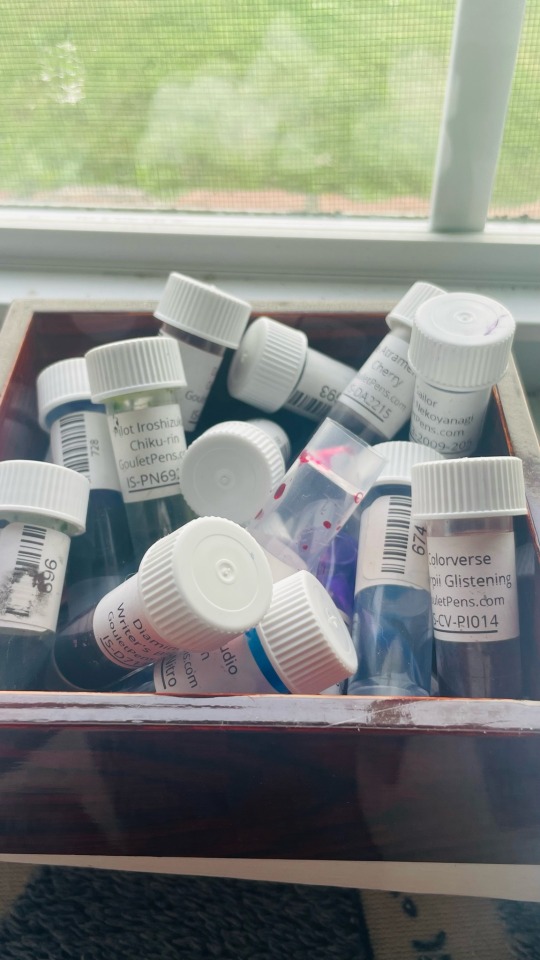
I hope this helps! I had to edit it a few times over the course of the past few weeks bc i went on an entire tangent about bootleg pens I like and uh. realized thats both overly complicated for the base question/bootleg pens tend to need tweaking to work nice. that being said, i'll say it quickly: buying lil nibs from aliexpress has actually worked pretty well for me n my tswbi knockoff (lanbitou 3059) has a fude nib i got that's bent to allow brushlike strokes! but I donmt recommend it for a first pen bc it required some grease and a nib tweak upon purchase and dries p easily bc of the cap.
#SO SORRY THIS TOOK FOREVER I DIED BUT I GOT A LITTLE BETTER!#going though all my inboxes now and. eeheh ive got srt to draw now...#not art#tldr. buy platinum preppy. get ink samples from goulet pens and a platinum converter OR#get a platinum refill cartridge of the carbon ink#waterproof isnt importsnt if you dont use watercolors and gouache like i do i suppose. hur i can confirm it stands up to HEAVY water abuse#thanks for the ask!#for paper rhodia seems to be most accessible. tomoe paper hard to buy. i still dont own any...#BUT i got a clairfontaine notebook for pen testing from goulet a while ago
4 notes
·
View notes